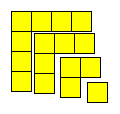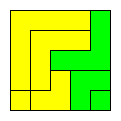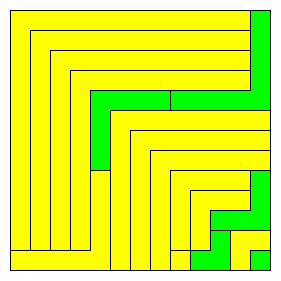

Suppose we have two "L"-decompositions, can the pieces of these two decompositions be reassembled into a single larger square?
Well, clearly it is necessary that the two "L"-decompositions we start with are part of a Pythagorean triple. (A triple of integers that satisfy the Pythagorean formula, for example (3,4,5) or (5,12,13).)
In the case of the Pythagorean triple (3,4,5), a solution is given below.

For every Pythagorean triple that I have tried, eventually a solution was found. There is no reason whatsoever why this should always be possible! But that is what seems to be the case!
Here is the solution for the (5,12,13) Pythagorean triple.

The smallest triple that no one has found a solution for is (20,21,29).